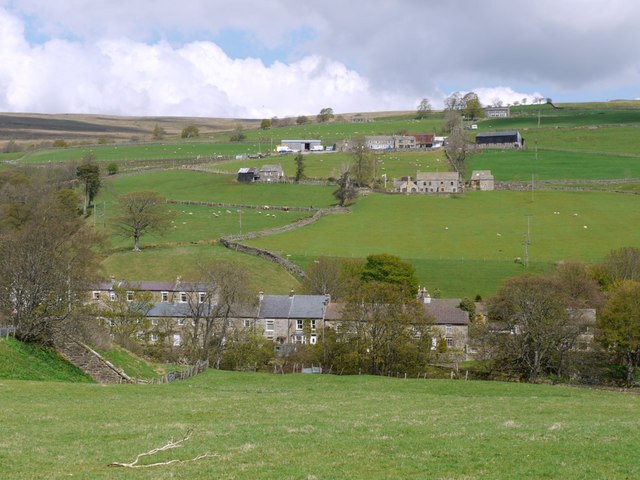West Blackdene and Whitestones
Introduction
The photograph on this page of West Blackdene and Whitestones by Andrew Curtis as part of the Geograph project.
The Geograph project started in 2005 with the aim of publishing, organising and preserving representative images for every square kilometre of Great Britain, Ireland and the Isle of Man.
There are currently over 7.5m images from over 14,400 individuals and you can help contribute to the project by visiting https://www.geograph.org.uk

Image: © Andrew Curtis Taken: 7 May 2010
One of the good things about walking around the valley sides in Weardale is being able to look back over the valley to where you have been. The distant cottage to the right is High Whitestones Image, below is Whitestones Farm Image, with Low Whitestones below Image West Blackdene is the hamlet in the Wear valley. The bridge that takes the road over the dismantled railway can be seen on the left. Life in Weardale was built on lead mining. Miners were poorly paid and relied on produce from small farms to feed their families. These are scattered along the hillside The lead mining industry finally collapsed in 1882 but many mines were reopened to extract fluorspar. The terraced houses of West Blackdene provided workers for the nearby lead mine (closed 1987), a saw mill, and later still, a fluorspar processing plant on the same site. The latter was closed in 1996. Many of the small farms belonging to miner-farmers were deserted and their cottages became derelict. Farming in the Dale became amalgamated into larger farms, such as that at Whitestones. Recent years have seen a lot of these buildings renovated providing attractive cottages for those who commute to work in nearby towns, or manage to work from home. It has, though, pushed up house prices for first-time buyers who want to stay in the community.

